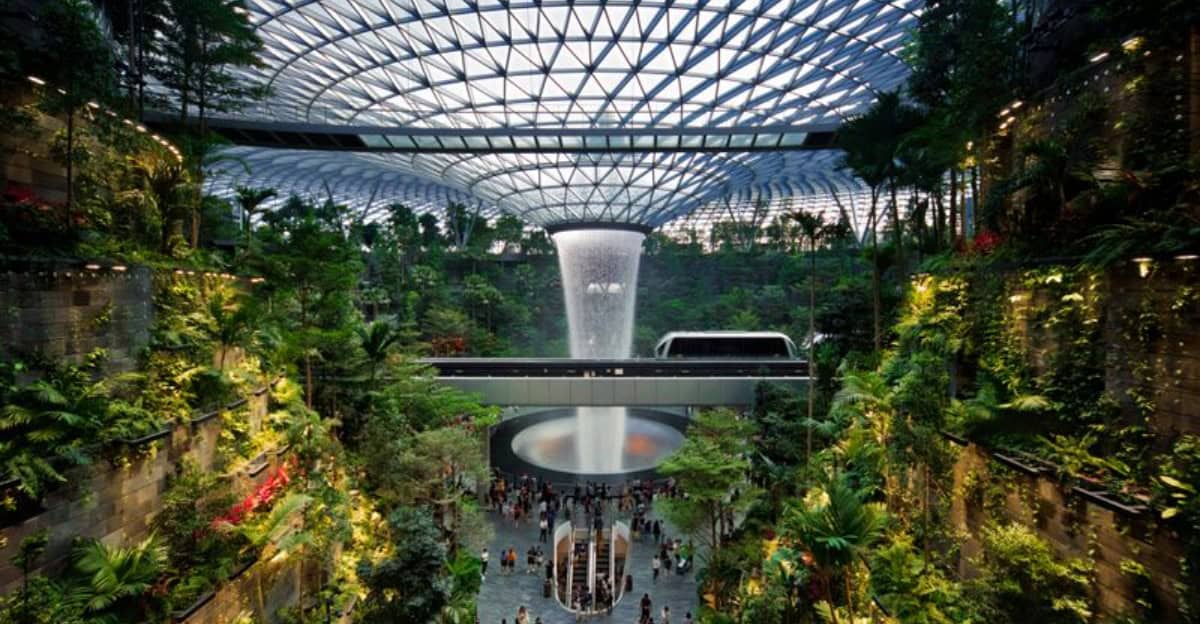Biophilic architecture seamlessly blends nature with modern design, creating spaces that foster well-being and harmony.
This architectural movement uses natural elements to enhance our living environments, whether through abundant greenery, organic materials, or nature-inspired structures.
Join us as we explore 10 incredible examples that demonstrate the beauty and benefits of biophilic design.
1. Marina One, Singapore
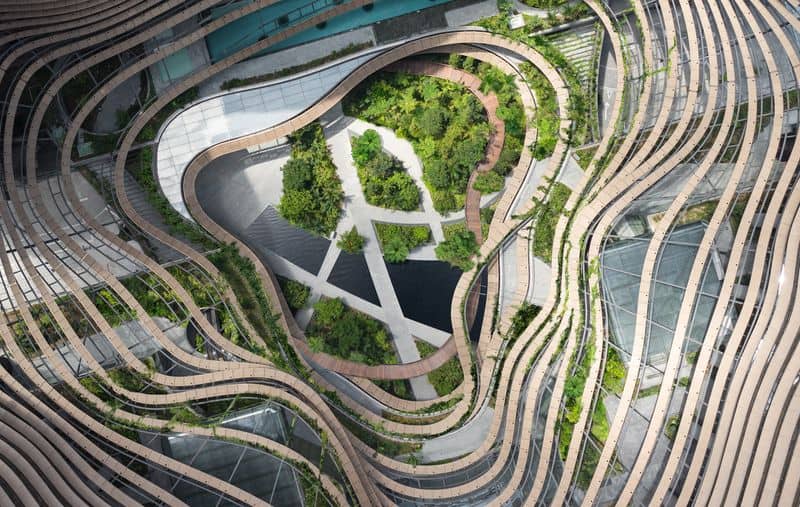
Marina One in Singapore showcases how urban living can harmonize with nature.
This stunning architectural feat integrates lush greenery into its design, offering residents a green oasis amidst the city’s hustle and bustle.
The complex features cascading gardens and terraces filled with plants, creating a serene environment. These green spaces not only enhance aesthetics but also improve air quality and promote biodiversity.
As you walk through Marina One, you feel transported to a tropical paradise, illustrating how biophilic architecture can transform urban spaces into eco-friendly havens.
2. The Eden Project, UK
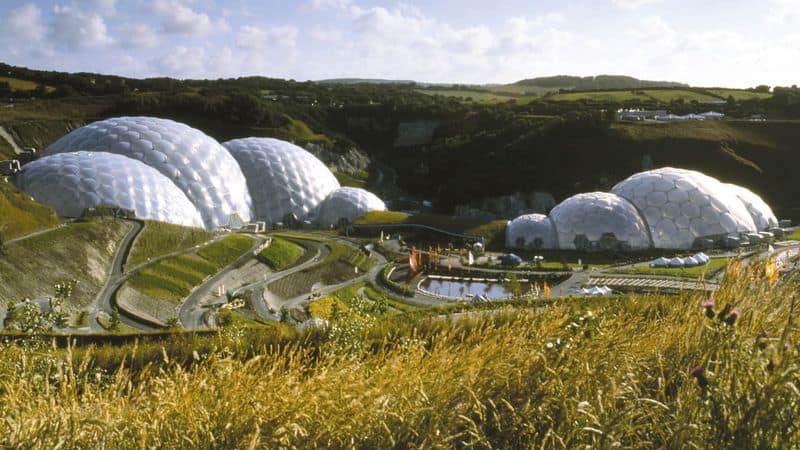
The Eden Project in Cornwall, UK, is a marvel of biophilic design. Enclosed within massive biodomes, it replicates various climates, nurturing diverse plant species.
This architectural wonder educates visitors about ecological interdependence while providing immersive natural experiences. The innovative structures, resembling futuristic greenhouses, make it a visual delight.
Walking through the Eden Project, you are enveloped in nature, learning about sustainability and the crucial link between humans and the environment.
3. Bosco Verticale, Italy
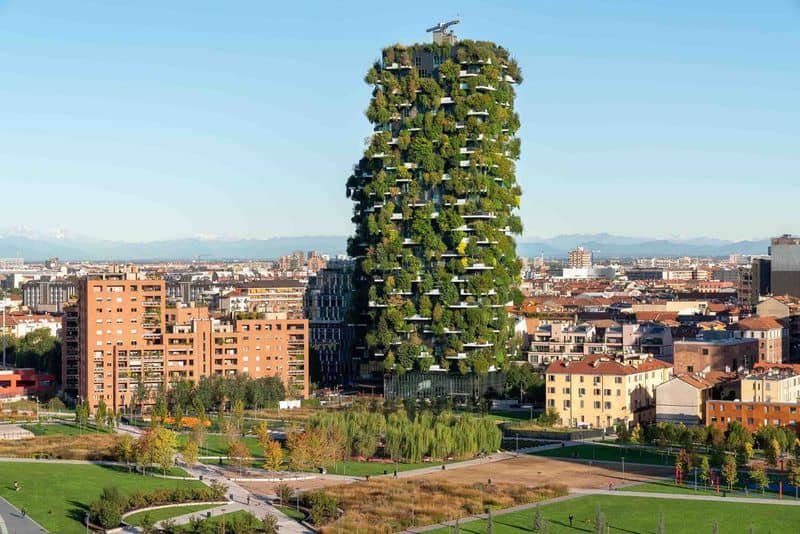
Bosco Verticale, or Vertical Forest, in Milan, Italy, exemplifies biophilic principles through its verdant design. The twin towers are adorned with thousands of trees and shrubs.
This green façade not only improves air quality but also provides insulation and noise reduction for residents. The visual impact is striking, merging urban life with nature.
Bosco Verticale demonstrates how vertical spaces can be transformed into thriving ecosystems, offering a template for sustainable urban living.
4. The Crystal, Denmark
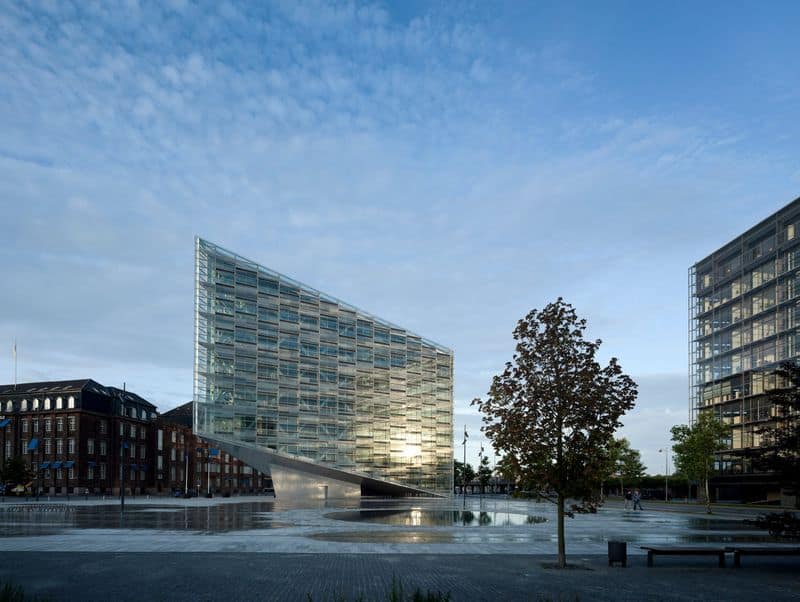
Copenhagen’s The Crystal is a beacon of biophilic architecture. This transparent building reflects its surroundings, harmonizing with the waterfront and greenery.
Inside, natural light floods the space, creating an inviting and energizing atmosphere. The design incorporates sustainable practices, emphasizing energy efficiency.
The Crystal stands as a testament to how modern architecture can integrate with nature, enhancing both functionality and aesthetics.
5. Pasona Urban Farm, Japan
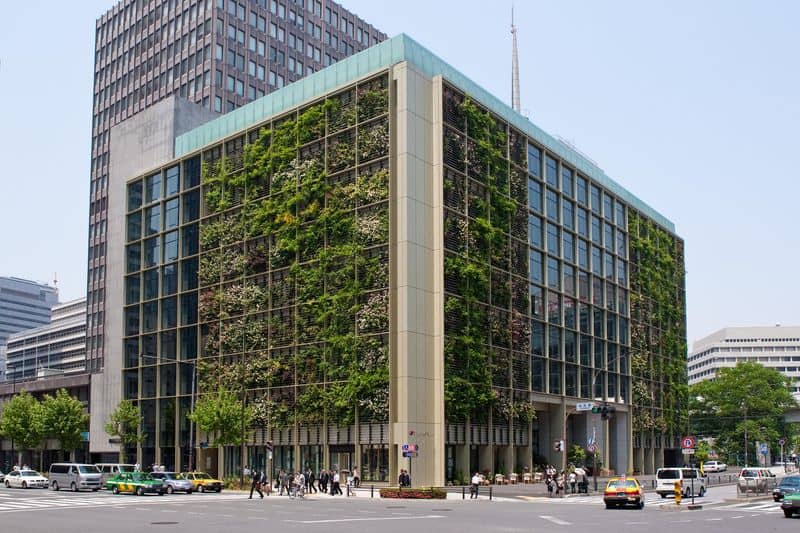
Pasona Urban Farm in Tokyo redefines office spaces by incorporating agriculture directly into its structure. Employees work alongside an indoor farm.
This innovative design not only provides fresh produce but also reduces stress, enhances air quality, and boosts morale. Natural light supports plant growth, creating a vibrant work environment.
Pasona Urban Farm illustrates how integrating nature into daily life can foster health and productivity.
6. Changi Airport, Singapore
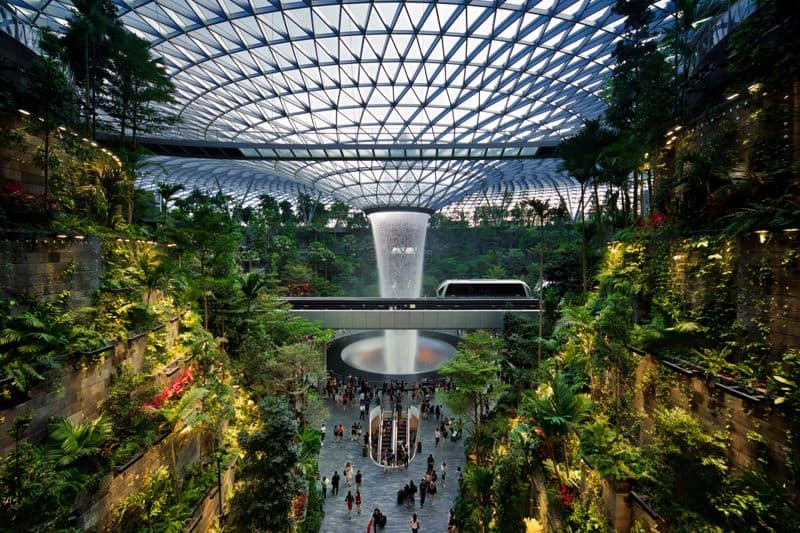
Changi Airport is renowned for its biophilic design, transforming travel experiences with its nature-inspired features. The crowning jewel is the Rain Vortex, a stunning indoor waterfall.
Surrounding the waterfall are lush gardens that create a calming oasis for travelers. The abundant greenery and natural light enhance relaxation and reduce travel stress.
This airport exemplifies how biophilic elements can redefine spaces, offering refreshing environments even in high-traffic areas.
7. High Line Park, USA
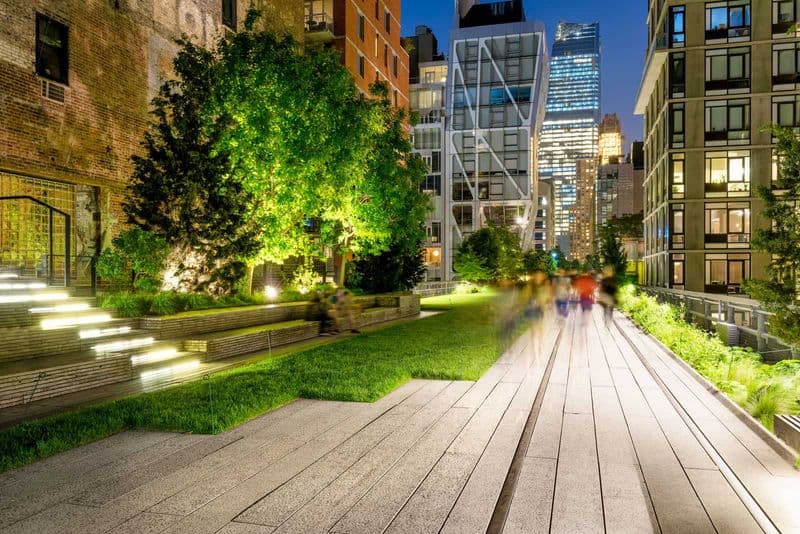
New York City’s High Line Park is a quintessential example of biophilic architecture transforming urban infrastructure. This elevated park repurposes a former railway.
Native plants and innovative design create a green corridor amid towering skyscrapers, offering a tranquil escape. Visitors enjoy panoramic views, bridging nature with urban life.
High Line Park shows how neglected spaces can become valuable green assets, enhancing city life.
8. One Central Park, Australia
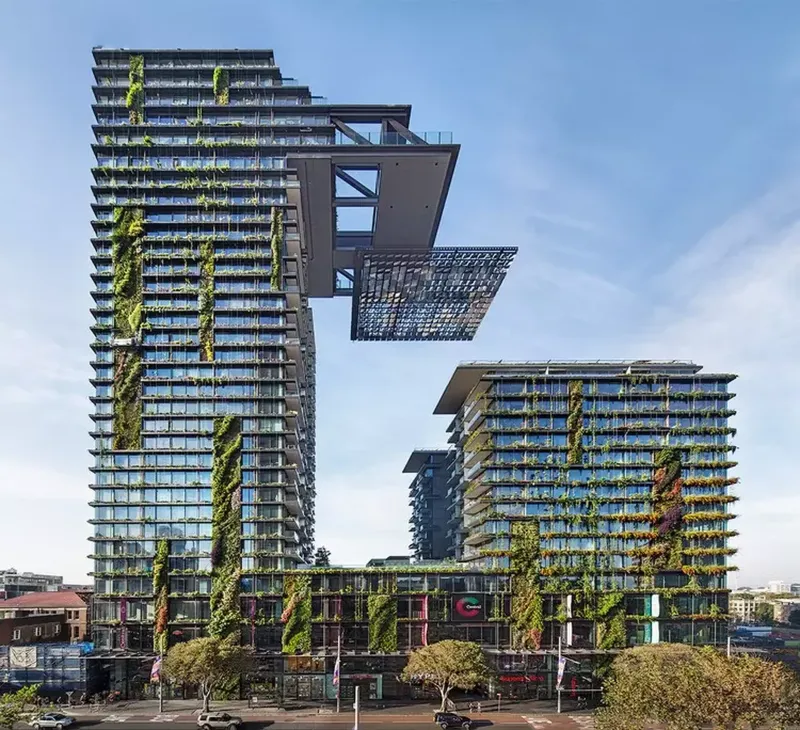
One Central Park in Sydney reimagines urban living with its stunning vertical gardens. Plants cascade down the building, creating a vibrant green facade.
The integration of nature not only beautifies the structure but also provides environmental benefits such as improved air quality and energy efficiency.
This architectural marvel showcases how biophilic design can enhance the livability and sustainability of urban environments.
9. Spheres at Amazon, USA
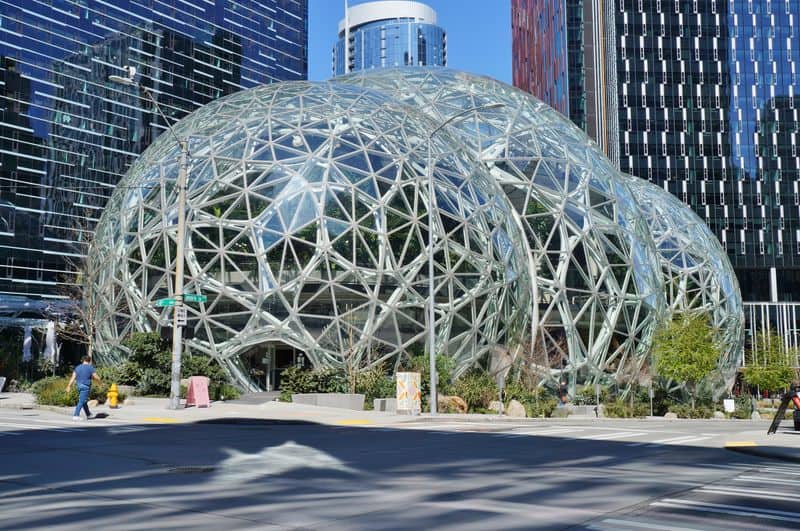
The Spheres at Amazon’s Seattle headquarters embody biophilic design by creating a lush indoor rainforest within glass orbs. Employees experience a unique workspace.
These spheres house an array of plant species, promoting relaxation and creativity. Natural light and organic forms make the environment inviting.
The Spheres highlight how workplaces can embrace nature, improving employee well-being and fostering innovation.
10. The Greenhouse, Singapore
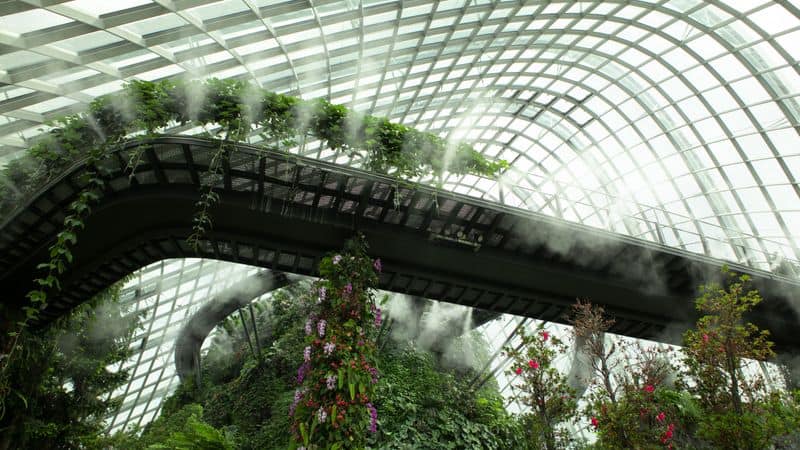
The Greenhouse in Singapore takes biophilic architecture to new heights with its living roof and vertical gardens. This eco-friendly building integrates nature at every level.
The design minimizes energy use and maximizes natural ventilation, making it a model of sustainability. Green spaces offer aesthetic and environmental advantages.
The Greenhouse exemplifies how incorporating nature into architecture can promote ecological balance and enhance urban landscapes.

